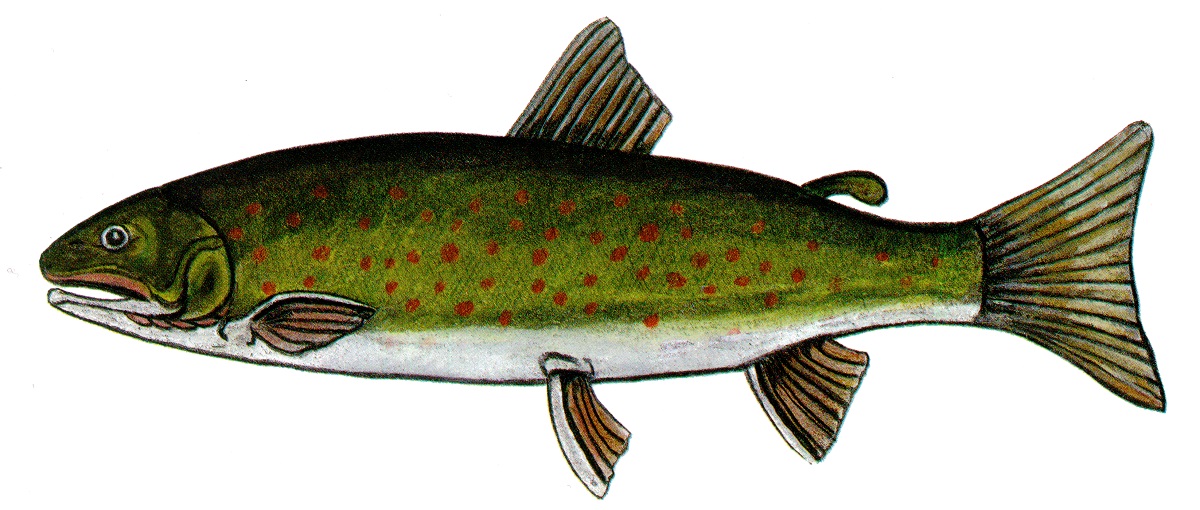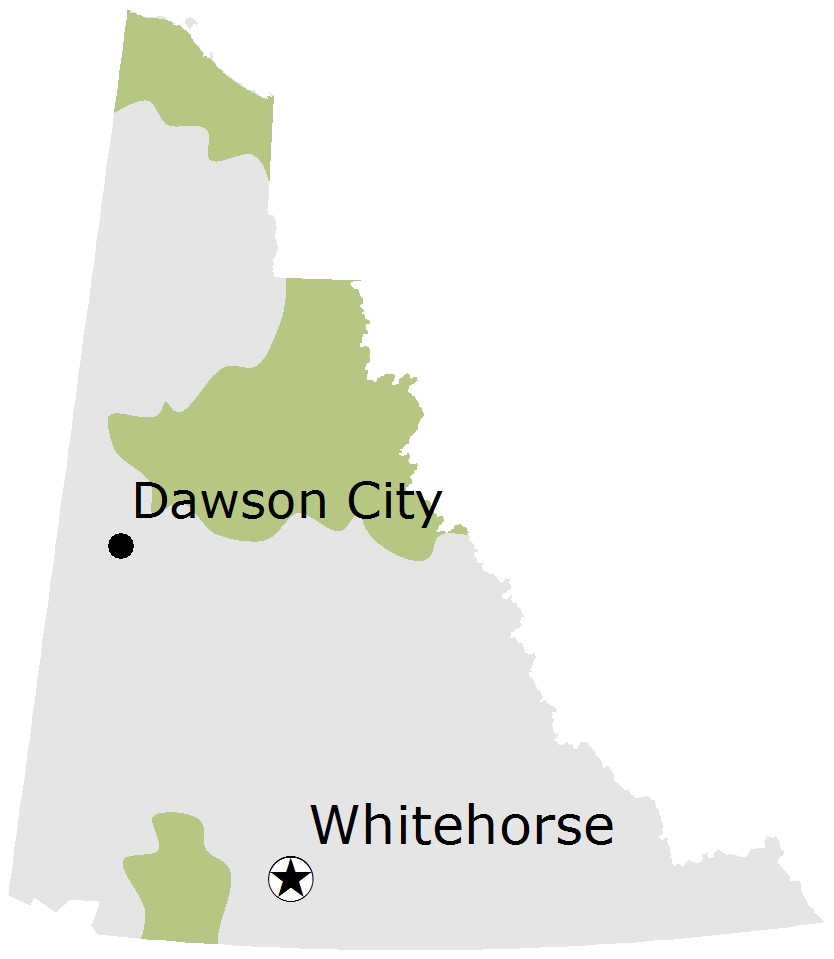
Name
- Common name: Dolly Varden
- Scientific name: Salvelinus malma
- Order: Salmoniformes
- Subfamily: Salmoninae
Viewing opportunities
- This colourful fish is found in 2 areas in the Yukon: the Tatshenshini River drainage in the southwest and the Peel River drainage in the far north.
- If you travel the Dempster Highway you might find Dollies in the Ogilvie and Blackstone rivers.
- On the Haines Road, Dollies are found in the Tatshenshini River and its tributaries.
Description
- Dolly Varden have a trout-like body, slightly oblique mouth, forked tail fin and small scales.
- Pale pink, lilac or red spots along sides are small and crowded.
- Spawning fish develop brighter spots, orange fins; males develop a kype, which is a hooked jaw.
- Easily confused with Bull Trout.
Fast facts
- Length: 30 to 60 cm
- Weight: 0.1 to 2 kg
- Habitat: Anadromous and freshwater
Conservation status
- Yukon: S3S4 (Vulnerable/Apparently Secure)
- Global: G5 (Secure)
Yukon population estimate
Not determined.
Behaviour
Dollies occupy a varied habitat in select areas of the Yukon. They will live in lakes, the ocean, deep runs and pools of creeks and rivers, clear mountain streams and estuarine waters. They spawn in the fall on gravel bottomed rivers and streams.
Diet
Aquatic insects, molluscs, crustaceans, leeches, fish eggs and fish.
Distribution

Dolly Varden and people
- Dolly Varden and Bull Trout are extremely difficult to tell apart, making geography the easiest way to distinguish the two. If found in the Liard drainage the fish is likely a Bull Trout, while those found in the Peel or Tatshenshini-Alsek drainages are likely Dolly Varden.
- Dolly Varden were named after a character in Charles Dicken’s novel "Barnaby Rudge," who was famous for wearing a brightly-coloured dress reminiscent of the fish’s colourful markings.
- Due to their predation on fish eggs and fry, they were once blamed for declining populations of commercially valuable fish like Sockeye Salmon. This resulted in culling and bounty programs, including one during the 1930s in which Alaskans were paid 2.5 cents for each Dolly Varden tail.